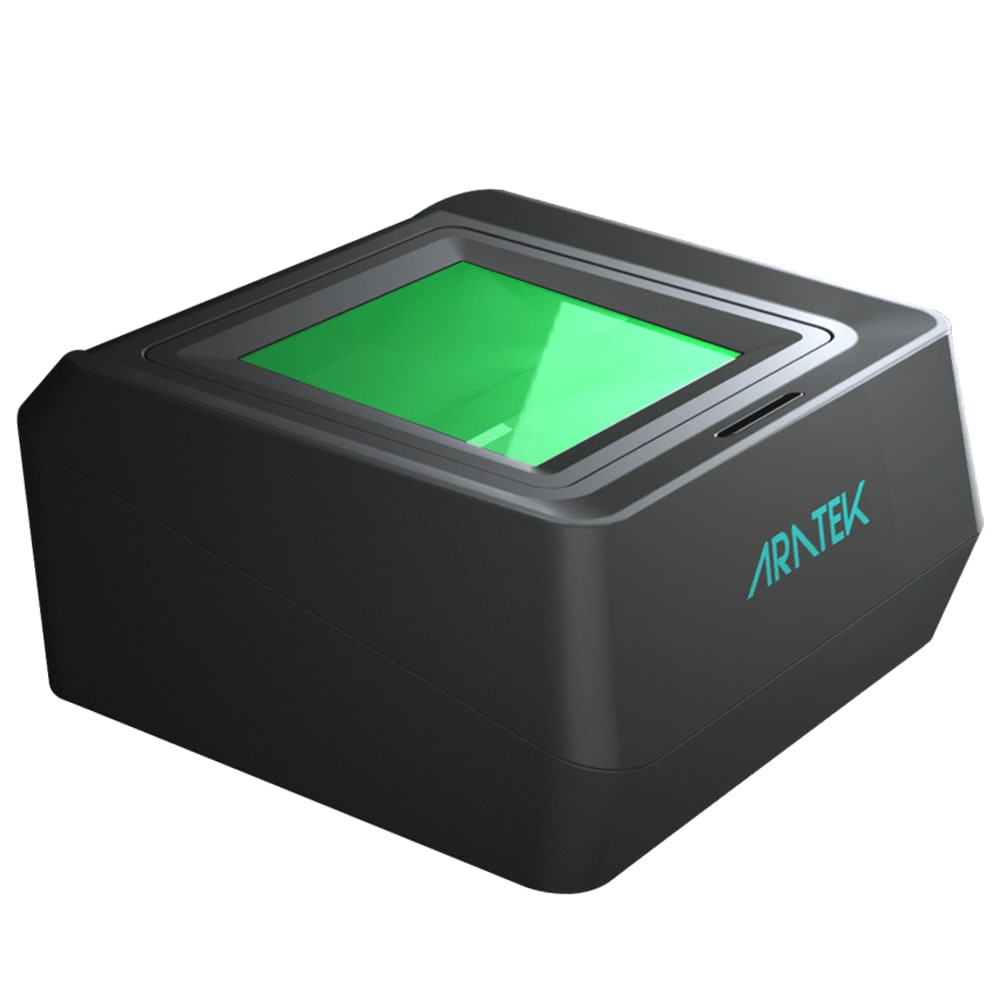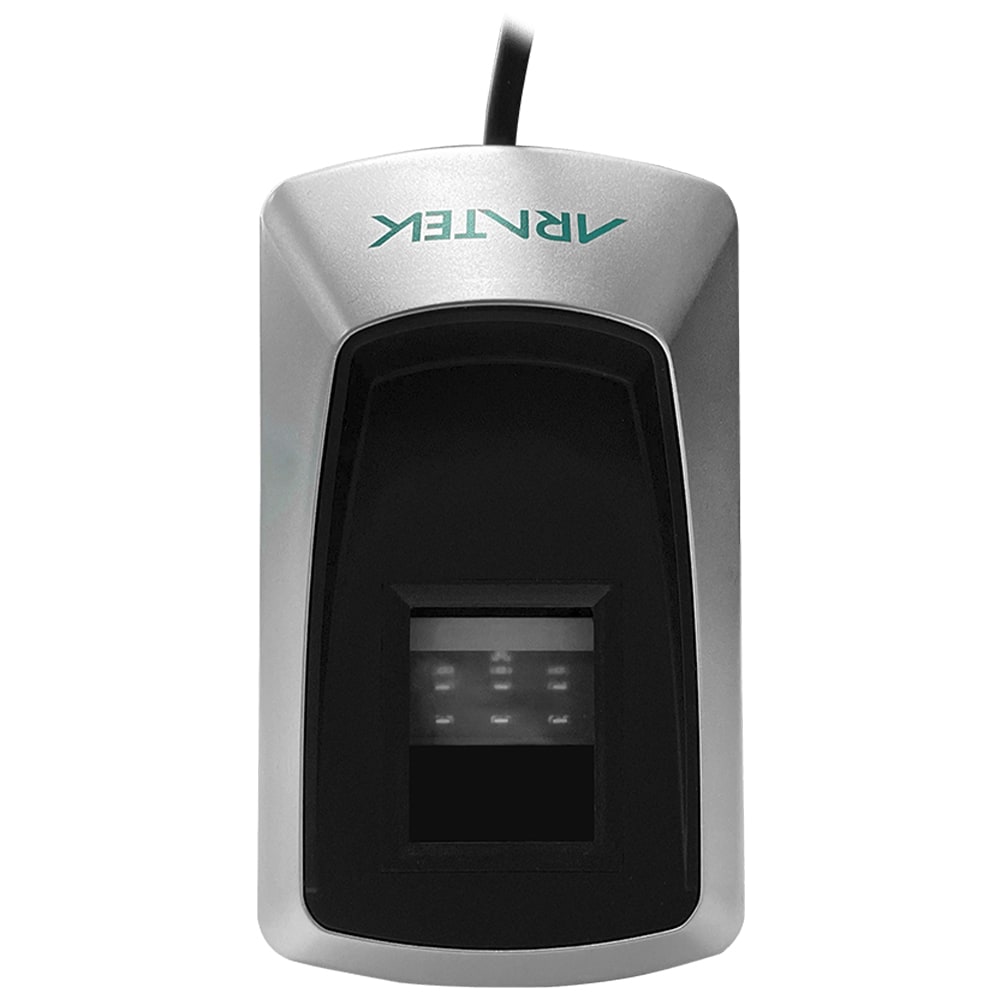
PRODUCT

Smarter Biometrics, Stronger Digital Identity.
VIEW ALL
product finder
solution
case study
support
Company

Identifying the World. Easily, Securely.


years of solid experience
20+
.jpg)
400+
customised projects



EN
.avif)

We've all heard about fingerprints—literally and figuratively—but what exactly is it? Fingerprints have been used for hundreds of years in various ways, from solving crimes to unlocking our phones. But why are fingerprints so reliable and unique? Let's explore the details to find out!
A fingerprint, in its simplest definition, is an impression of the friction ridges on your finger. These ridges are formed by interactions between the layers of your skin and the oils that naturally occur on your fingers, resulting in biometric patterns that are uniquely your own.
The patterns that are created by these ridges form your fingerprint, which is usually categorized into one of three main types:
%2520Loops.jpeg)
These patterns have a curved path that hooks inward or outward on both ends. The loops represent about 60-65% of all fingerprints and are typically considered the easiest for identification purposes.
%2520Whorls.jpeg)
These patterns have either one or two ridges that extend farther out than the rest and form circular rings. Whorls are typically considered more difficult to identify accurately, but can still be used as powerful tools in certain situations.
%2520Arches.jpeg)
This type of pattern is the rarest, with a single ridge curving downward or upward and connecting at the bottom. Like whorls, arches are often more difficult to accurately identify and only have a few known uses.
Some sub-types within these main categories can be used to further identify fingerprints, including:
%2520Radial%2520loop.jpeg)
Also known as delta patterns, these fingerprints have a distinctive hook-like shape at one end of the loop. Radial loops are often used as evidence in criminal cases due to their distinct shape and relatively easy identification.
%2520Ulnar%2520loop.jpeg)
Also known as twin loops, these fingerprints have a distinctive hook-like shape in the center of the loop. Ulnar loops are also often used to help identify fingerprints in forensics, but can typically be easily distinguished from radial loops due to their distinctive shape.
%2520Central%2520pocket%2520loop.jpeg)
These patterns have two ridges that meet in a circular shape, with one ridge entering from the side. Central pocket loops are commonly used in forensics for their iconic shape, but can also be difficult to identify correctly.
%2520Double%2520loop.jpeg)
These prints have two loops side-by-side, with one loop directly next to the other. Double loops are used in forensics to help identify fingerprints and can often be easily distinguished from other sub-types.
%2520Accidental%2520whorl.jpeg)
These prints are considered the rarest of all types due to their distinctive circular pattern. Accidental whorls are often more difficult to identify than other sub-types, but can still be used in certain situations.
%2520Plain%2520whorl.jpeg)
These patterns have multiple ridges extending outward to form a circular shape. Plain whorls are often used in forensics as a secondary form of identification, as they can be slightly more difficult to identify than other sub-types.
%2520Tented%2520arch.jpeg)
These patterns have the same characteristics as arches but with an additional inward curve in the center of the loop. Tented arches are typically used in specialized forensic analysis applications, as they can be more difficult to identify correctly than other sub-types. In addition to the primary patterns of friction ridges, other unique features such as cones and spurs are also present on your fingers. By taking advantage of these additional details, it is possible to improve fingerprint identification when more typical sub-types have not been successful.
Beyond the three primary fingerprint types and their sub-variants, a number of other elements are used to classify fingerprints for different purposes. Such features include: location (tips or bases of your fingers), ridge flow (the ridges' direction), ridge density (number of ridges and furrows in that area) as well as certain special patterns like spirals or circular arches.
Further reading:
The Science of Fingerprints: Classification and Uses
Why are our fingerprints so reliable? And how do they work as a form of identification?
Unlike snowflakes or leaves, you have a unique identifier that lies within your fingertips. This special pattern is made up of raised ridges and tiny valleys that form what we know as "fingerprints." These patterns are additionally enriched with pores that secrete perspiration below the skin's surface, making fingerprints exclusive to each person. The distinctiveness of fingerprint design can be attributed to the various levels of tissue on our fingers— creating an individualized print like no other!
There is also a lot of variation between fingerprints due to genetics and differences in physical features like the length and thickness of fingers, so no two fingerprints are exactly alike – not even identical twins!

In addition, fingerprints don't change over time, unlike other forms of identification such as behavioral biometrics or voice recognition. This means that they can be reliably used over long periods without needing to be updated or changed. The uniqueness of fingerprints has long been exploited by law enforcement agencies to help them solve crimes—but they have also recently become popular in other fields as well.
Although our fingerprints are unique and remain constant with age, several factors can affect their depth or shallowness, thereby altering the identification process. Factors such as environmental exposure to chemicals, nutrients in one’s diet, and skin conditions will all contribute to fluctuations in fingerprint patterns over time. The following are some of the most common causes:
But, are fingerprints as unique as we've always believed? A recent study led by Gabe Guo at Columbia University, as highlighted in a 2024 published article titled "Are fingerprints unique? Not really, AI-based study finds," introduces a thought-provoking twist. Using an AI model known as a deep contrastive network, the researchers analyzed thousands of fingerprints and discovered that prints from different fingers of the same person share remarkable similarities. This AI-driven insight suggests that while our fingerprints are unique identifiers, there's a deeper story to tell when looking at the prints across an individual's fingers.

The study analyzed 60,000 fingerprints and discovered that fingerprints from different fingers of the same person can share significant similarities. This AI was able to discern when prints from different fingers belonged to the same individual with up to 77% accuracy, challenging the traditional focus on the minutiae of fingerprints for identification purposes.
While this does not dispute the uniqueness of fingerprints between different individuals, it opens new avenues for forensic science by showing that the fingerprints of a single person have identifiable patterns that AI can detect. This insight could improve how criminal investigations utilize fingerprints, making it an exciting development in the study of AI-based biometric identification and related applications.
Today, the fingerprint-capturing process starts with placing your finger onto a fingerprint scanner / fingerprint reader that scans unique details like ridges, furrows, and other fingerprint characteristics. This data is then stored as a biometric template or profile which can be used for precisely pinpointing an individual's identity. With such high levels of accuracy, fingerprints and fingerprint recognition have proven invaluable for for a wide range of applications.
Fingerprints are captured and recorded using a variety of different methods, depending on the application and use case. Some of the most common methods include:
%2520Live%2520scan.jpeg)
A live scan device, also known as a biometric fingerprint scanner, is typically used for law enforcement or forensic applications where high-quality fingerprints are required. To capture the fingerprint, a user places their finger on a glass plate and the device digitally scans and photographs the fingerprint. This method can produce highly detailed, high-resolution fingerprints that are often used in fingerprint analysis.
The FBI has set up a fingerprint scanner certification program for live scan devices. This program makes sure that the devices meet certain image quality requirements. These standards were originally made for law enforcement, but they have now become an industry standard.
%2520Paper%2520and%2520ink.jpeg)
If you're looking for a classic way to record prints, utilizing ink and paper is the traditional option. This process consists of rolling an inked finger on specific paper before scanning or taking a photo of the image digitally.
Law enforcement agencies have depended upon this method from centuries ago up until the modern day; it's even been used when applying for visas and passports! The fingerprint cards used for this method developed during the 1900s are still practiced today, but they've been ameliorated to match rising quality parameters.
The uniqueness of each person's fingerprints has led to the creation and implementation of fingerprint biometrics for a variety of purposes. The history of fingerprint identification goes back to the 19th century when police officers and fingerprint examiners would compare suspected criminals' fingerprint records with those of known offenders. At that time, fingerprints were mainly used as a way to identify people who had been arrested or detained.
As fingerprint identification technology evolved, its utility extended far beyond the realms of criminal investigation and became increasingly adopted in other sectors. With improvements to standard practices and procedures, usage rapidly expanded exponentially with time.
Today, fingerprints can be used for more than just solving crimes; they are also commonly found in everyday life. Many mobile devices now come with fingerprint sensors installed, allowing users to unlock phones quickly and securely without having to enter a passcode or password every time. Similarly, many banks now use biometric scanning devices such as fingerprint scanners for authentication purposes when customers access their accounts online or in person at the bank branch. Below we outline some of the main uses for fingerprints in different spheres:
Since the days of early police work, fingerprinting has been a mainstay of identifying criminals and solving crimes. Law enforcement officers have been leveraging fingerprint technology for numerous years to apprehend suspects and reduce criminal activity. Some agencies are now utilizing automated tools that can quickly analyze crime scene fingerprints, allowing them to make more precise identifications. The FBI is one of the many law enforcement entities that employ IAFIS (Integrated Automated Fingerprint Identification System), now known as Next Generation Identification (NGI), which is one of the most well-known national fingerprint databases and has over 60 million fingerprints and other identifying information for criminals.
Additionally, the method of latent fingerprint identification is also used by law enforcement to reveal latent fingerprints, process them, and match them to the known prints of a suspect.
Latent fingerprints are those that can't be seen without chemical or fingerprint powder (such as black granular, magnetic, or silver nitrate) enhancement and may be found on surfaces such as glass, wood, plastic, or metal. After they have been isolated and visualized, they can then be compared with known criminals' databases to achieve a match and identify those responsible for the crime.
Fingerprint technology has found a place in the world of finance, where fingerprints are often used to identify customers. By employing fingerprint authentication when customers access their bank accounts both online and at branches, financial institutions can make sure that fraud and money laundering do not occur. Fingerprint recognition have revolutionized additional security measures, from mobile applications to account openings and money transfers.

This milestone for the technology can provide much-needed peace of mind to customers, help make transactions safer, and improve financial inclusion.
Fingerprints are often used in the healthcare industry to help prevent medical identity theft and other forms of fraud that result from incorrect patient identification. The use of automated fingerprint detection systems, like those found in hospitals and clinics, makes it simple for doctors and nurses to quickly identify patients.
Other healthcare applications include allowing access to medical records, prescription drugs, and medical devices.
Fingerprint authentication is a popular way to protect residential and commercial buildings, airports, train stations, school campuses, and other public places.

Biometric security through fingerprints provides enhanced physical security while reducing the risk of unauthorized personnel misuse.
In addition to these main applications, fingerprint analysis and identification technologies are also used for other purposes such as:
Overall, it is clear that fingerprint identification technology has become a valuable asset to society, whether in law enforcement, banking, finance, healthcare, or other areas. By providing a simple, accurate way to identify individuals in any situation while also protecting against fraud, this technology is sure to continue revolutionizing the world for years to come.
Fingerprint is perhaps the most remarkable and unique feature of human body that has turned out to be an integral part of our lives across various fields, ranging from criminal investigations and forensics to banking and finance.
Fingerprint biometrics has revolutionized our world since its introduction decades ago, offering a safe and dependable method of processing transactions while keeping personal data shielded from harm. Individuals, companies, and governments have all bought into this technology because it can accurately identify people with complete security. There is no doubt that fingerprint technology will remain the leader in innovation for years to come as it continues to improve our lives!
In the future, digital identity will become increasingly important as more and more of our lives move online. Fingerprint biometrics is perfectly positioned to be at the forefront of this shift, offering a highly reliable and accurate way of verifying our identity in the digital world. Countries like India, Nigeria, Ecuador, and so many others are already implementing this technology in their national ID programs or to modernize their banking and finance infrastructures. As the benefits of fingerprint biometrics continue to manifest, it is sure to become a key tool in our evolving digital ecosystems. We can only imagine what other exciting innovations are on the horizon!
.avif)
Use our product finder to pinpoint the ideal product for your needs.
















